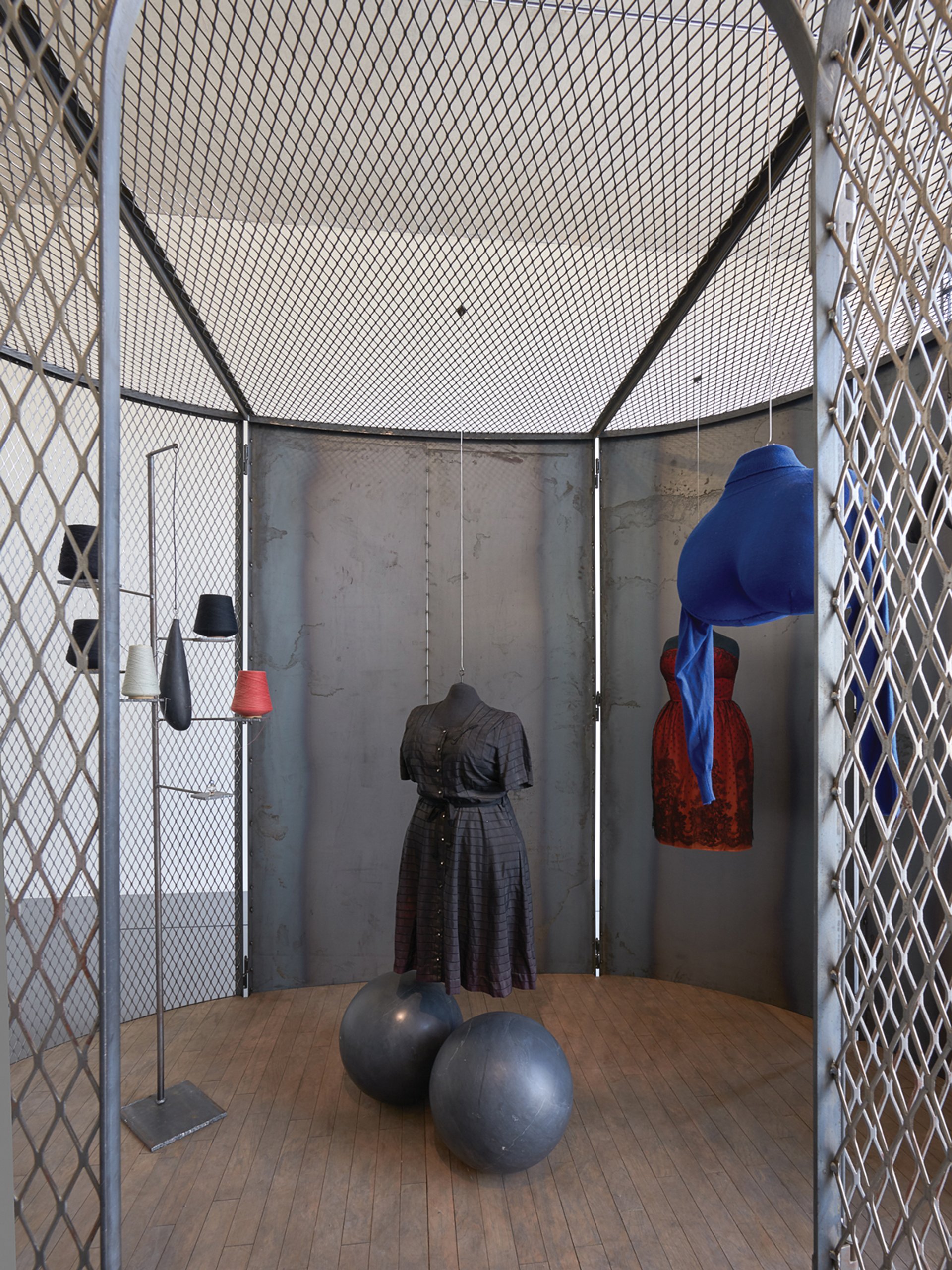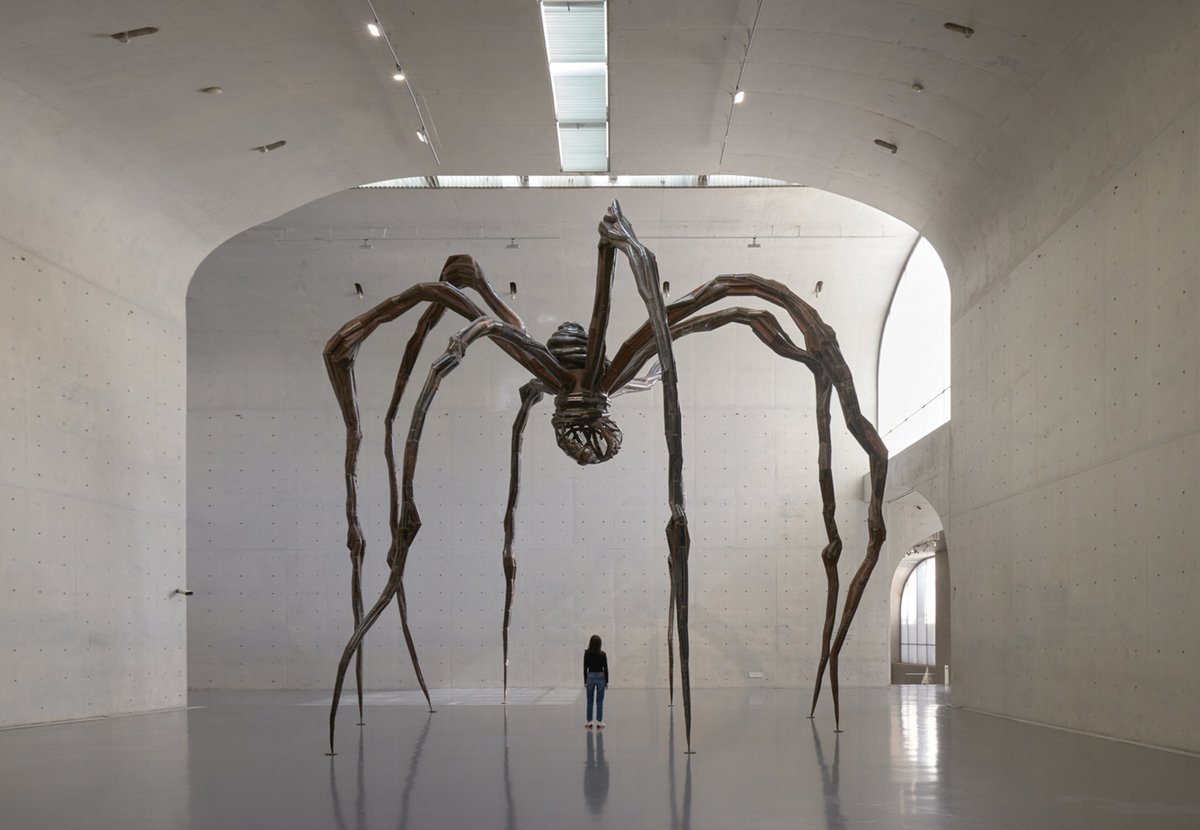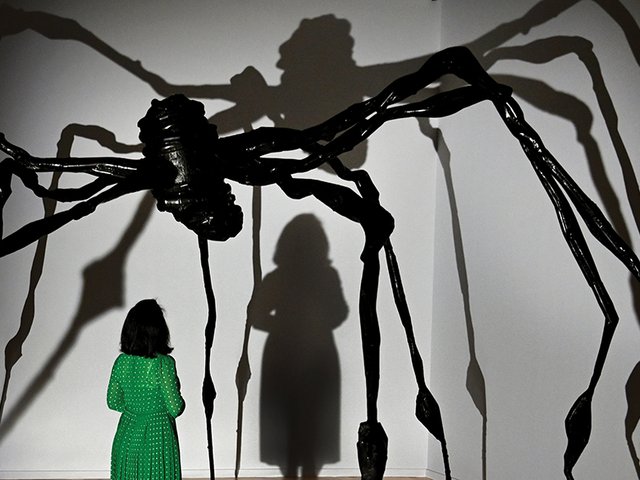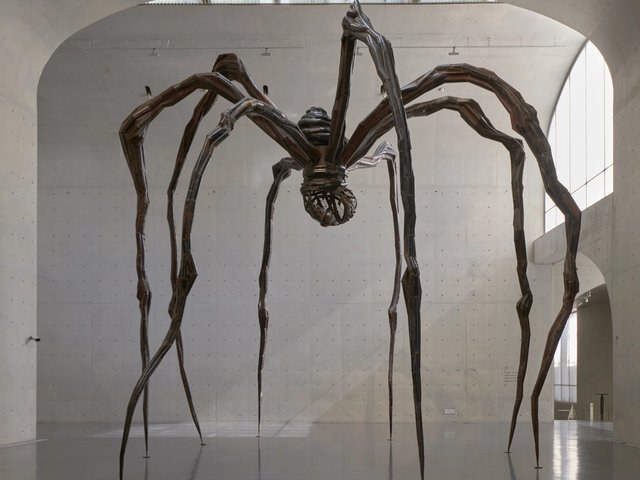The Long Museum’s cavernous concrete halls might have been made for Louise Bourgeois’s work, never more so than in the case of her huge bronze spider, Maman (1999), on loan from the Tate in London. This is the first large-scale solo show in China dedicated to the work of the late French-American artist. It is also the first time that this original steel version of Maman has been on loan to another institution, an agreement “facilitated” by Hauser & Wirth, the commercial gallery that represents Bourgeois’s estate.
Marc Payot, Hauser & Wirth’s partner and vice president, says: “We were in close dialogue with Wang Wei [the Long Museum’s director] in developing the initial exhibition concept and we introduced her to the Bourgeois estate and Philip Larratt-Smith, the exhibition’s curator.”
Larratt-Smith, who was Bourgeois’s literary archivist from 2002 until her death in 2010, first visited the site a year ago. “[Wang Wei] really gave me free rein, and I had two floors of the museum because I felt that I needed to give Louise’s work the space it needed,” Larratt-Smith says. He has taken a line from one of her diaries for the show’s title—The Eternal Thread—which affords him the flexibility to spiral out from the Personage sculptures from the late 1940s, through a group of 1990s Cell installations, to her late fabric and spider works, and a huge aluminium piece, The Couple (2007-09), hanging in public for the first time ever.
Perhaps one of the reasons that The Couple has never been shown before is that it is so challenging to install. “It is over 7m high and it weighs 5,500lb, making it the largest hanging work Bourgeois ever made, and one of her largest works period,” Larratt-Smith says. The sculpture fitted through the access door with barely an inch to spare—a “massive relief”, Larratt-Smith says.

Louise Bourgeois’s Cell (Black Days) (2006) © The Easton Foundation/VAGA (ARS), NY. Photo: Jiaxi & zhe. Long Museum
The image of a couple repeats time and again. “Louise had a powerful fear of abandonment, and a lot of this work addresses that,” Larratt-Smith says. “The historical element, works from the 40s, 50s and 60s, is important too as this is the first museum show of her work in China.” He thinks “outside of the artistic milieu very few people [in China] were aware of Bourgeois’s work at all—they might have known about the spiders, but not much more than that.”
Heavy with symbolism and contradiction, Bourgeois’s work has rarely looked so fearsome, or so delicate, although six works had to be left out after the Shanghai culture bureau said they could not be shown. However, it “may have been a blessing in disguise, since it freed me up to go with a very spare hanging”, Larratt-Smith says.
The exhibition, held in collaboration with The Louise Bourgeois Studio, will travel to Beijing’s Song Art Museum in March 2019 and will include the six works barred in Shanghai.
• Louise Bourgeois: the Eternal Thread, Long Museum, Shanghai, until 24 February 2019




